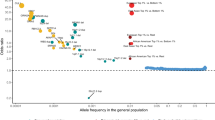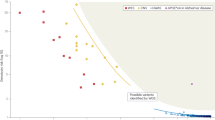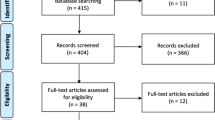Abstract
Schizophrenia is a complex disorder, caused by both genetic and environmental factors and their interactions. Research on pathogenesis has traditionally focused on neurotransmitter systems in the brain, particularly those involving dopamine. Schizophrenia has been considered a separate disease for over a century, but in the absence of clear biological markers, diagnosis has historically been based on signs and symptoms. A fundamental message emerging from genome-wide association studies of copy number variations (CNVs) associated with the disease is that its genetic basis does not necessarily conform to classical nosological disease boundaries. Certain CNVs confer not only high relative risk of schizophrenia but also of other psychiatric disorders1,2,3. The structural variations associated with schizophrenia can involve several genes and the phenotypic syndromes, or the ‘genomic disorders’, have not yet been characterized4. Single nucleotide polymorphism (SNP)-based genome-wide association studies with the potential to implicate individual genes in complex diseases may reveal underlying biological pathways. Here we combined SNP data from several large genome-wide scans and followed up the most significant association signals. We found significant association with several markers spanning the major histocompatibility complex (MHC) region on chromosome 6p21.3-22.1, a marker located upstream of the neurogranin gene (NRGN) on 11q24.2 and a marker in intron four of transcription factor 4 (TCF4) on 18q21.2. Our findings implicating the MHC region are consistent with an immune component to schizophrenia risk, whereas the association with NRGN and TCF4 points to perturbation of pathways involved in brain development, memory and cognition.
This is a preview of subscription content, access via your institution
Access options
Subscribe to this journal
Receive 51 print issues and online access
$199.00 per year
only $3.90 per issue
Buy this article
- Purchase on SpringerLink
- Instant access to full article PDF
Prices may be subject to local taxes which are calculated during checkout
Similar content being viewed by others
References
Stefansson, H. et al. Large recurrent microdeletions associated with schizophrenia. Nature 455, 232–236 (2008)
Mefford, H. C. et al. Recurrent rearrangements of chromosome 1q21.1 and variable pediatric phenotypes. N. Engl. J. Med. 359, 1685–1699 (2008)
The International Schizophrenia Consortium. Rare chromosomal deletions and duplications increase risk of schizophrenia. Nature 455, 237–241 (2008)
Brunetti-Pierri, N. et al. Recurrent reciprocal 1q21.1 deletions and duplications associated with microcephaly or macrocephaly and developmental and behavioral abnormalities. Nature Genet. 40, 1466–1471 (2008)
The International Schizophrenia Consortium. Common polygenetic variation contributes to risk of schizophrenia and bipolar disorder. Nature 10.1038/nature08185 (this issue)
Shi, J. et al. Common variants on chromosomes 6p22.1 are associated with schizophrenia. Nature 10.1038/nature08192 (this issue)
Kong, A. et al. Detection of sharing by descent, long-range phasing and haplotype imputation. Nature Genet. 40, 1068–1075 (2008)
Li, T. et al. Transmission disequilibrium analysis of HLA class II DRB1, DQA1, DQB1 and DPB1 polymorphisms in schizophrenia using family trios from a Han Chinese population. Schizophr. Res. 49, 73–78 (2001)
The Wellcome Trust Case Control Consortium. Genome-wide association study of 14,000 cases of seven common diseases and 3,000 shared controls. Nature 447, 661–678 (2007)
van Heel, D. A. et al. A genome-wide association study for celiac disease identifies risk variants in the region harboring IL2 and IL21. Nature Genet. 39, 827–829 (2007)
Harley, J. B. et al. Genome-wide association scan in women with systemic lupus erythematosus identifies susceptibility variants in ITGAM, PXK, KIAA1542 and other loci. Nature Genet. 40, 204–210 (2008)
Eaton, W. W. et al. Association of schizophrenia and autoimmune diseases: linkage of Danish national registers. Am. J. Psychiatry 163, 521–528 (2006)
Juvonen, H. et al. Incidence of schizophrenia in a nationwide cohort of patients with type 1 diabetes mellitus. Arch. Gen. Psychiatry 64, 894–899 (2007)
Lewis, C. M. et al. Genome scan meta-analysis of schizophrenia and bipolar disorder, part II: Schizophrenia. Am. J. Hum. Genet. 73, 34–48 (2003)
Ruano, D. et al. Association of the gene encoding neurogranin with schizophrenia in males. J. Psychiatr. Res. 42, 125–133 (2008)
Broadbelt, K., Ramprasaud, A. & Jones, L. B. Evidence of altered neurogranin immunoreactivity in areas 9 and 32 of schizophrenic prefrontal cortex. Schizophr. Res. 87, 6–14 (2006)
Bernal, J., Rodriguez-Pena, A., Iniguez, M. A., Ibarrola, N. & Munoz, A. Influence of thyroid hormone on brain gene expression. Acta Med. Austriaca 19 (suppl. 1). 32–35 (1992)
Huang, F. L., Huang, K. P. & Boucheron, C. Long-term enrichment enhances the cognitive behavior of the aging neurogranin null mice without affecting their hippocampal LTP. Learn. Mem. 14, 512–519 (2007)
Li, J., Pak, J. H., Huang, F. L. & Huang, K. P. N-methyl-D-aspartate induces neurogranin/RC3 oxidation in rat brain slices. J. Biol. Chem. 274, 1294–1300 (1999)
Bliss, T. V. & Collingridge, G. L. A synaptic model of memory: long-term potentiation in the hippocampus. Nature 361, 31–39 (1993)
Toulopoulou, T. et al. Substantial genetic overlap between neurocognition and schizophrenia: genetic modeling in twin samples. Arch. Gen. Psychiatry 64, 1348–1355 (2007)
Wang, H. et al. CaMKII activation state underlies synaptic labile phase of LTP and short-term memory formation. Curr. Biol. 18, 1546–1554 (2008)
Flora, A., Garcia, J. J., Thaller, C. & Zoghbi, H. Y. The E-protein Tcf4 interacts with Math1 to regulate differentiation of a specific subset of neuronal progenitors. Proc. Natl Acad. Sci. USA 104, 15382–15387 (2007)
Pitt, D. & Hopkins, I. A syndrome of mental retardation, wide mouth and intermittent overbreathing. Aust. Paediatr. J. 14, 182–184 (1978)
Kalscheuer, V. M. et al. Disruption of the TCF4 gene in a girl with mental retardation but without the classical Pitt-Hopkins syndrome. Am. J. Med. Genet. A. 146A, 2053–2059 (2008)
Gretarsdottir, S. et al. The gene encoding phosphodiesterase 4D confers risk of ischemic stroke. Nature Genet. 35, 131–138 (2003)
Devlin, B. & Roeder, K. Genomic control for association studies. Biometrics 55, 997–1004 (1999)
Mantel, N. & Haenszel, W. Statistical aspects of the analysis of data from retrospective studies of disease. J. Natl Cancer Inst. 22, 719–748 (1959)
Pritchard, J. K., Stephens, M. & Donnelly, P. Inference of population structure using multilocus genotype data. Genetics 155, 945–959 (2000)
Acknowledgements
We thank the subjects and their relatives and staff at the recruitment centres. This work was sponsored by EU grants LSHM-CT-2006-037761 (Project SGENE), PIAP-GA-2008-218251 (Project PsychGene) and HEALTH-F2-2009-223423 (Project PsychCNVs). Genotyping of the Dutch samples was sponsored by NIMH funding, R01 MH078075. This work was also supported by the National Genomic Network (NGFN-2) of the German Federal Ministry of Education and Research (BMBF) and Marie Curie grant PIAP-GA-2008-218251 (PsychGene). M.M.N. received support from the Alfried Krupp von Bohlen und Halbach-Stiftung. We are grateful to S. Schreiber and M. Krawczak for providing genotype data for PopGen controls, and to K.-H. Jöckel and R. Erbel for providing control individuals from the Heinz Nixdorf Recall Study. Recruitment of the patients from Munich was partially supported by GlaxoSmithKline. We are grateful to the Genetics Research Centre GmbH, an initiative by GlaxoSmithKline and LMU. The Northern Finland Birth Cohort 1966 (NFBC66) is thanked for providing population controls for the study. The genotyping of NFBC66 was financially supported by National Institutes of Health grant 1R01HL087679-01, STAMPEED.
Author Contributions H.S., S.S., D.A.C., D.S.C., D.R., E. Sigurdsson and K.S. wrote the first draft of the paper. M.H., B.B.M., P.M., I.G., H.-J.M., A.H., A.C.N., G.F., N.W., J.L., J. Suvisaari, A.T.-H., T.T., E.B., R.M., M.R., S. Tosato, S.D., I.M., J.O., O.A.A., M.R., R.A.O., L.A.K., O.G., A.D.B., M. Nyegaard, A.F.-J., M. Nordentoft, D.H., B.N.-P., Y.B., R.B., H.B.R., S. Timm, M.M., I.B., J.M.R., L.A., V.K., J. Sanjuan, R.F., E.V., U.E., M.P., J.L.Y., N.B.F., R.M.C., V.G., A.C., C.A., J.C., E.G.J., L.T., I.A., O.M., P.B.M., B.F., T.P. and GROUP recruited, diagnosed and gathered phenotypes. H.S., D.R., R.d.F., E. Strengman, T.S., P.M.M., T.T., J.R.G., U.T., H.P., D.B.G., T.W., D.A.C., L.P., A.K., D.S.C. and K.S. planned, supervised and coordinated the work. S.S., H.S., S.C., P.O., G.M., A.I., T.E.T., O.P.H.P., D.G., K.V.S., M.M.N., T.H. and A.K. analysed the data. All authors contributed to the current version of the paper.
Author information
Authors and Affiliations
Consortia
Corresponding author
Ethics declarations
Competing interests
Some of the authors including Kari Stefansson (CEO of deCODE genetics), Jeffrey R. Gulcher (CSO of deCODE genetics) and Augustine Kong (VP Statistics at deCODE genetics) are shareholders in deCODE genetics.
Supplementary information
Supplementary Information
This file contains Supplementary Methods, Supplementary Tables 1-6, Supplementary Figure 1 with Legend and Supplementary References. (PDF 205 kb)
Rights and permissions
About this article
Cite this article
Stefansson, H., Ophoff, R., Steinberg, S. et al. Common variants conferring risk of schizophrenia. Nature 460, 744–747 (2009). https://doi.org/10.1038/nature08186
Received:
Accepted:
Published:
Issue Date:
DOI: https://doi.org/10.1038/nature08186
This article is cited by
-
Soluble terminal complement complex blood levels are elevated in schizophrenia
European Archives of Psychiatry and Clinical Neuroscience (2024)
-
A significant, functional and replicable risk KTN1 variant block for schizophrenia
Scientific Reports (2023)
-
Regulation of synaptic connectivity in schizophrenia spectrum by mutual neuron-microglia interaction
Communications Biology (2023)
-
The molecular pathology of schizophrenia: an overview of existing knowledge and new directions for future research
Molecular Psychiatry (2023)
-
Analysis of the Relationship between Genetic Factors and the Risk of Schizophrenia
Neuroscience and Behavioral Physiology (2023)




